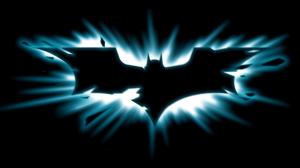Last evening, while working on some C# code on Windows, I saw a notification for the Windows Creator’s Update. Well this was cool since a lot of people having been raving about it and I happily installed the updated hoping for the latest and greatest.
However, later that evening when I booted into my Linux partition, I was greeted with a boot into the Emergency Mode. I assumed that the Windows update must have reset some of my old settings which Windows has been notoriously known to do, so I booted back into Windows, and updated the settings again, booted from a Live-USB to run fdisk and clean any dirty bits on my partitions, but to no avail.
Sadly, after messing around with various solutions off the internet, I had to concede defeat and accept the fact that I could no longer boot into my linux OS. After some strong cussing at Microsoft and rage yelling, I decided to pick up the pieces and recover as much data as I could.
Booting Into Your System
One of the reasons I love working with Linux is the fact that I can use Live-USBs. This is a whole operating system that boots from your USB and runs off your RAM without actually installing the OS on your machine, i.e. it does not touch the secondary memory (HDD/SSD/etc). This is extremely useful since now you can boot into your system and go rummaging through your old linux filesystem without affecting it. Since it runs off the RAM, it’s a bit slower than a native installation, but hey, this is only for recovery purposes.
The easiest way is to just create a Ubuntu Live-USB on Windows. The distro and version doesn’t matter since this is only for recovery, but I generally create a Live-USB of the distro I would end up installing again in order to save time.
Make sure you’re booting off the USB and when you come to the GRUB screen, select Try without installing. This will boot you into Ubuntu where you can use the File Explorer GUI to select the old partition (which I will henceforth refer to as the partition) and mount it. Now I could go exploring into the file system as normal. I had to chown -R $USER some directories in order to be able to access them, but I managed to recover all the data and code from my system onto an external HDD.
Now the only thing remaining was recovering my Chrome tabs from my last web browsing session. This was non-trivial since I now had to find out how Chrome stored my previous session tabs and I also had to go about understanding OneTab’s structure to recover the URLs saved there. If you don’t use OneTab, you should – it’s great!
Thankfully, Stack Overflow was once again a saving grace and I was able to get straightforward solutions without too much trouble.
Recovering Session Tabs
Head over to ~/.config/google-chrome/Default on the partition. This will be under the /media directory and will mostly be denoted by custom GUIDs which you can identify by looking at the folder’s properties from the GUI. Once you’re in the the Default directory, all you need to do is copy over 2 files: Current Session and Current Tabs. The files are binary files so you can’t just read them from a text editor despite the Unix philosophy of everything is a file.
Now to recover your session tabs, we need to use a Chrome browser on another machine. You need to save all the tabs on your Chrome browser (OneTab is great for this), then you should export those tabs to a text file, shut down the Chrome browser and make sure you kill all the Chrome tasks. Then you go to the same location on your alternate machine. The location for different OSes can be found here. Replace the existing Current Session and Current Tabs files with the one you retrieved from the partition. Start up Chrome and you should see all your “supposedly” lost tabs in front of you in all their glories.
In case it didn’t work, just make sure you close Chrome completely, include any background working processes and try the above process again. Since you have all the old as well as new URLs backed up, there shouldn’t be any cause for concern.
Recovering OneTab URLs
Now comes the other bit: Recovering your saved URLs from the OneTab extension. Luckily, this is easier than it sounds. First off, ensure you save your current saved URLs in OneTab. This can be done by exporting them and saving them in a text file. Time to recover data!
In the same config directory ~/.config/google-chrome/Default there is a directory called Local Storage. Inside that directory you’ll see a bunch of files, with the extensions .localstorage and .localstorage-journal. Each of these pairs of files correspond to an extension installed in Chrome and are the data storage files for the extension. The extension corresponding to each file can be identified by the unique ID of the extension, hence for OneTab, you’re looking for the following files:
- chrome-extension_chphlpgkkbolifaimnlloiipkdnihall_0.localstorage-journal
- chrome-extension_chphlpgkkbolifaimnlloiipkdnihall_0.localstorage
Copy these files over to your alternate system in the same Local Storage directory. Restart Chrome completely and run the OneTab extension and voila! You should now see all the tabs saved in OneTab from your old system. You can import your previously exported tabs into OneTab again and you should have a combination of both sets of tabs.
Conclusion
Hopefully, at this point you should be able to resume working on your machine with no interruptions. With a little bit of understanding of how Chrome saves its data, we were able to easily recover previous sessions and extension data. Not too bad, huh?
